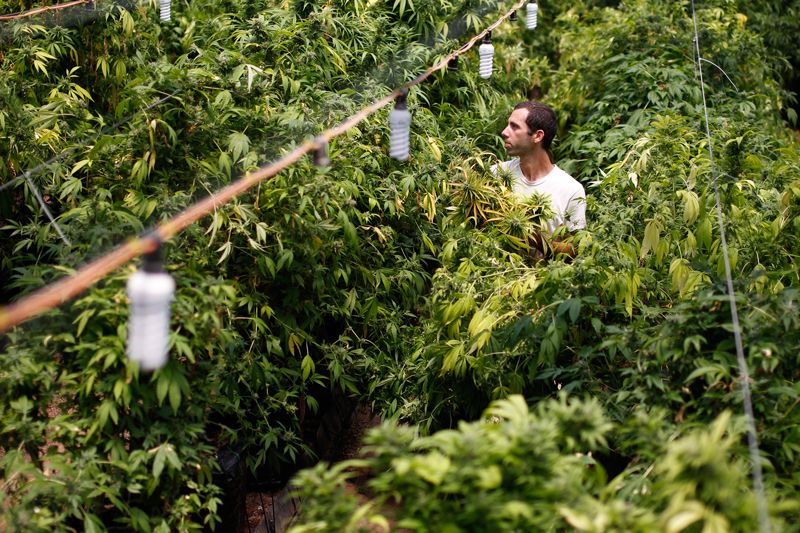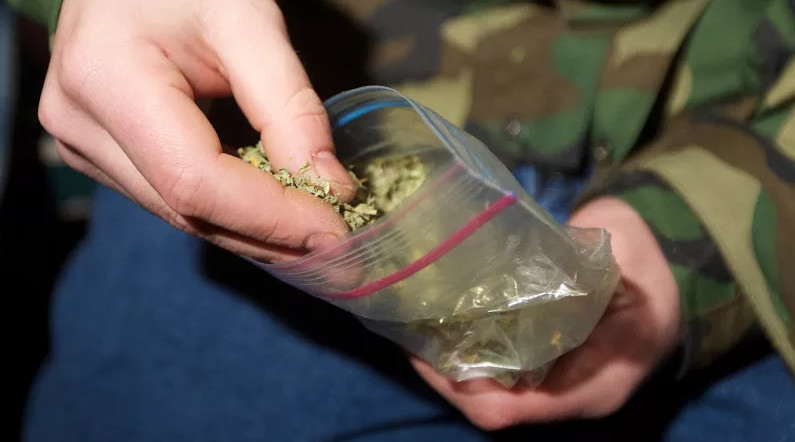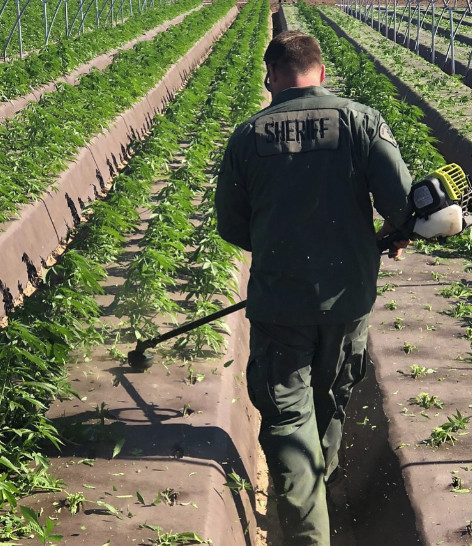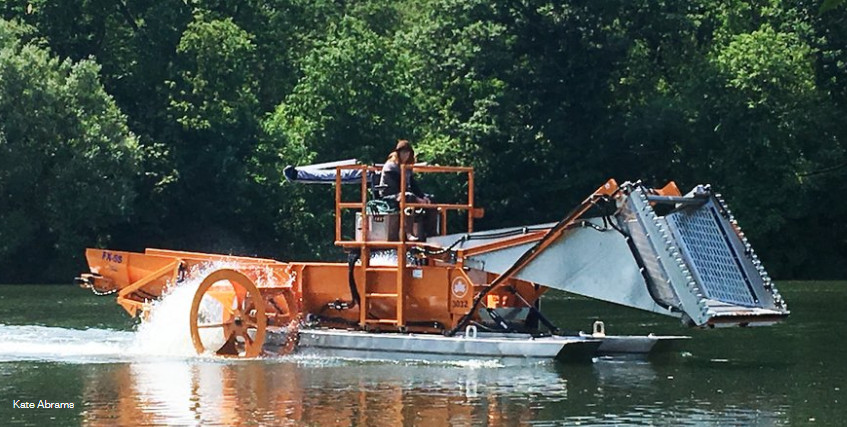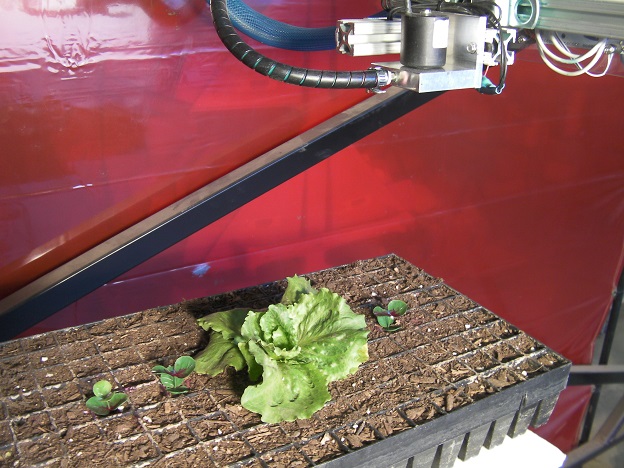Canada has just become the second country in the world, after Uruguay, to legalize cannabis for all uses — a move that has prompted a flood of funding for basic research into cultivation of the plant, and a clamour for scientists with expertise in genetics, bioengineering and growing practices.
Elsewhere, research opportunities are generally more limited, and scientists studying the plant often have to go to extreme lengths to stay on the right side of local laws or to get sufficient funding for their work. Still, money is flowing in the places that have made medical cannabis a top priority. In the wake of Canada’s law change, Nature takes a tour of cannabis research outside the great white north.
Israel
No government has been as supportive of cannabis research as Israel’s. It was here that Raphael Mechoulam, an organic chemist now at the Hebrew University of Jerusalem, first determined the chemical structures of the active component1, known as tetrahydrocannabinol (THC), as well as its non-psychoactive counterpart, cannabidiol2, in the 1960s. The country has since sought to establish itself as the world leader in studying cannabis for medicinal use.
Unlike some countries, including Canada, where government scientists still have limited access to high-THC varieties of the plant, Israel’s agriculture ministry last year built a national centre for medical-cannabis research.
Housed at the Volcani Center in Rishon LeZiyyon, the government’s cannabis farm includes thousands of plants spread across several greenhouses and indoor growing facilities. There, plant biologist Nirit Bernstein is trying to perfect cultivation and weed out bad practices. “We have to develop science-based protocols for optimizing the cultivation of this magical plant,” Bernstein says. “There’s very little scientific information that’s available.”
United States
Public-sector spending on agricultural research is greater in the United States than just about anywhere else on Earth, other than China. Yet, when it comes to cannabis, the federal government doesn’t spend anything on non-health–related studies. That’s because, even though high-THC varieties of the plant are now legal in some form in 30 US states (and Washington DC) and hemp is legal in another 19, cannabis is still considered an illicit drug at the national level — and all research conducted on it at any university that receives public funding must conform with federal regulations.
Studying cannabis DNA is allowed, and the government is gradually becoming more permissive of hemp cultivation. But any work on the basic biology of cannabis with higher levels of THC is strictly off-limits.
That has led to a few creative workarounds. In Colorado, where cannabis has been legal for recreational use since 2014, evolutionary genomicist Daniela Vergara at the University of Colorado Boulder created a foundation to support projects she couldn’t do on campus. Unlike her university, the foundation can accept funding from the cannabis industry — money she then spends on sampling DNA from plants grown at local dispensaries and growers. Although she can analyse DNA-sequence data at the university, “I don’t touch the plant on campus or during my working hours”, she says.
Uruguay
Uruguay’s lawmakers were a step ahead of Canada’s: in 2013, the nation became the first to fully legalize pot. Yet researchers have faced “serious bottlenecks” in gaining access to the plant, according to an analysis published in March3, and there’s hardly any public money specifically set aside to foster cannabis research.
“Although the law indicates that the state should promote scientific research on the subject, much remains to be done,” says natural-products chemist Carlos García, who leads the Interdisciplinary Group for Cannabis Research at the University of the Republic in Montevideo. “Funds for that activity remain very scarce.”
Plant molecular geneticist Astrid Agorio at the Clemente Estable Institute of Biological Research in Montevideo is attempting to profile the entire genetic structure of two varieties of Uruguayan cannabis with a budget of just US$6,000. She says she’d like to start growing plants herself for this research, but can’t afford the costs associated with building greenhouses and security systems. Because of that lack of funding support, “Uruguay can’t be a world-leader in cannabis science now”, Agorio says.
Colombia
On the other side of the continent, one of South America’s largest economies is looking to make a play in the global cannabis industry. Colombia’s criminal cartels have been growing cannabis for decades, and the government hopes that farmers formerly working with traffickers will now put their skills to use for the legal market. This would entail destroying illegal crops and adopting new cultivation methods refined in the country’s ornamental-flower industry, the second largest in the world.
“We’re taking all the techniques that have been developed in the last 40 years in the cut-flower business in Colombia and adapting cannabis to it,” says Marcelo de Siqueira, chief operating officer of PharmaCielo, a company headquartered in Toronto, Canada, that grows cannabis in Rionegro, Colombia. He contrasts that with what’s being done elsewhere, where many companies are “taking an underground, inefficient, high-energy-consumption system that was typical of the black market and adapting it to large-scale production”.
The country’s cheap labour force and year-round 12-hour light cycles offer economic advantages, says Ryan Douglas, a cannabis consultant in Manizales, Colombia. “It’s the ideal climate for growing cannabis,” he says. And there’s always room for improvement. At the Nueva Granada Military University in Bogotá, for example, natural-products chemist Ericson Coy-Barrera will soon start working with researchers at Khiron Life Sciences, another Toronto-based company with growing operations in Colombia, to validate and optimize protocols for drying the plant and extracting useful components.
Unlike in many other countries where cannabis is illegal, the plant is permitted on the premises of government-supported universities. That’s a huge benefit, says Khiron’s scientific research manager, Ana María Borda in Ibagué. The university is already equipped with state-of-the-art technology to support the work. “Everything is in place,” she says, “and ready to go”.
Credit: www.nature.com

